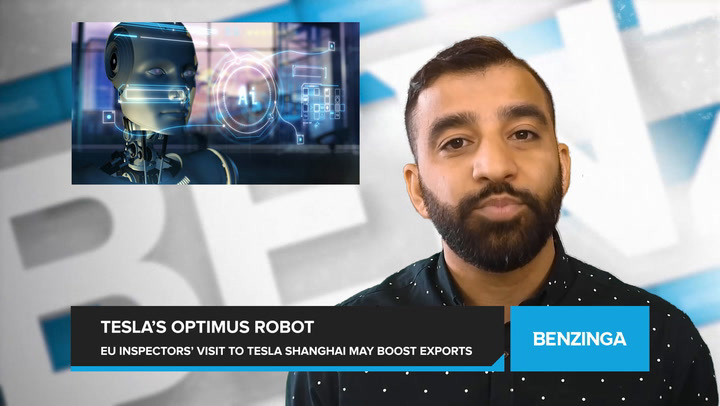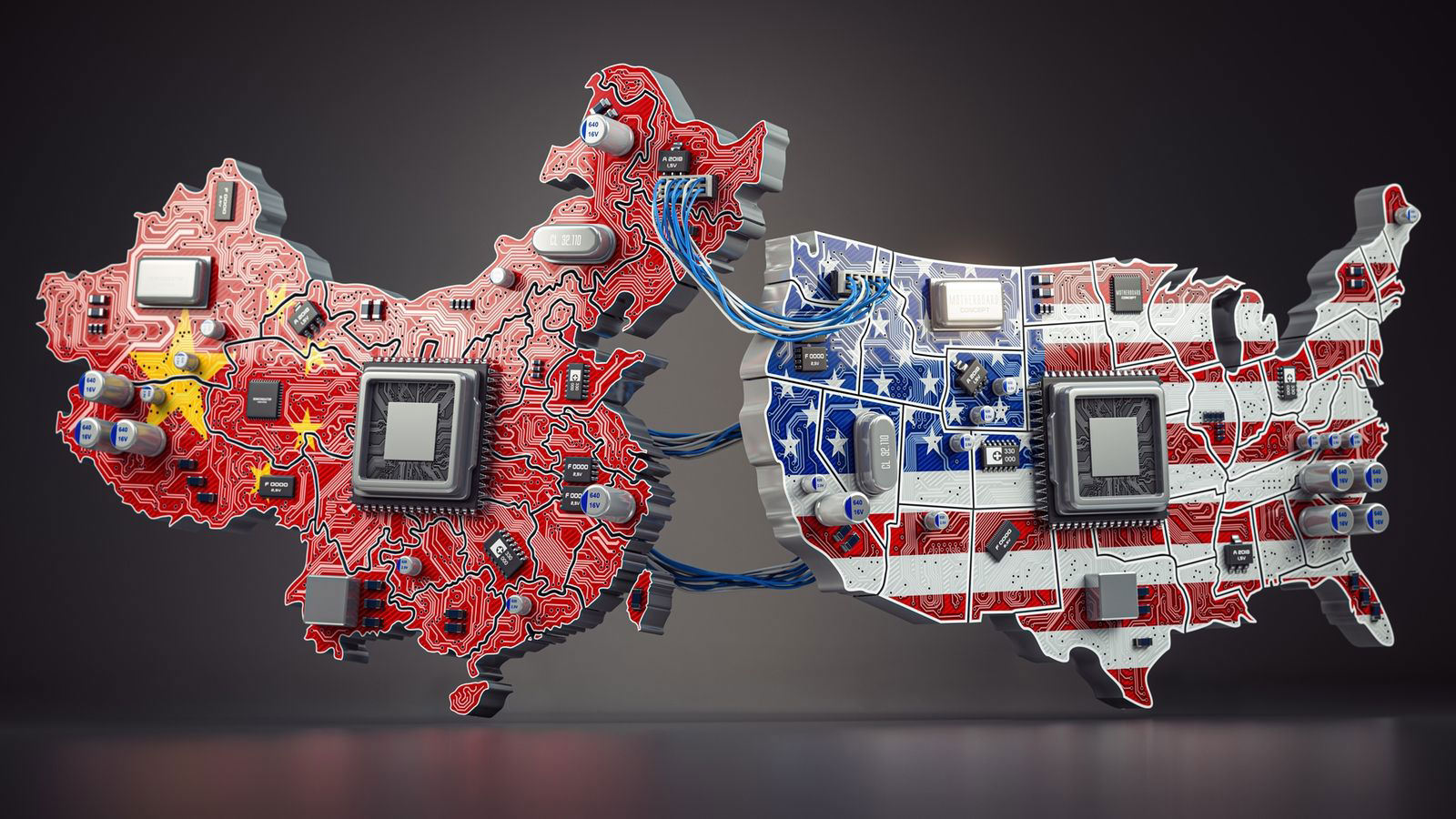China's Rare Earth Crackdown Threatens Tesla's Optimus Robot Timeline

Table of Contents
China's Dominance in Rare Earth Minerals
The Importance of Rare Earths in Robotics
Rare earth elements (REEs), specifically neodymium, praseodymium, and dysprosium, are indispensable for the manufacturing of high-performance motors, actuators, and sensors crucial for robots like Optimus. These elements possess superior magnetic properties unmatched by other materials, making them vital for achieving the precision and power needed in advanced robotics.
- Neodymium magnets are crucial for the high torque and precision required in robotic joints, enabling smooth and powerful movements.
- Dysprosium enhances the temperature stability of these magnets, preventing performance degradation even under intense operational conditions, a critical factor for reliable robot performance. Without these properties, the robot's functionality would be severely compromised.
China's Market Control and Export Restrictions
China holds a near-monopoly on rare earth mining and processing, controlling an estimated 70% of global production. Recent years have witnessed a tightening of export regulations, creating uncertainty and potential disruptions in the global supply chain. This strategic move is driven by several factors:
- Environmental concerns: The mining and processing of rare earths can be environmentally damaging, prompting China to implement stricter regulations.
- Strategic resource control: China aims to leverage its dominance in rare earth minerals for geopolitical influence and economic advantage.
- Geopolitical leverage: The control over rare earth exports provides China with a powerful tool in international relations, potentially influencing trade negotiations and technological competition.
These restrictions translate into potential price increases and supply shortages, creating significant challenges for manufacturers reliant on these critical materials.
Impact on Tesla's Optimus Robot Production
Supply Chain Disruptions and Delays
The reduced availability of rare earth minerals from China directly threatens Tesla's ability to source components for Optimus. This scarcity could lead to:
- Production delays: A shortage of crucial components will inevitably push back Tesla's ambitious production targets and market entry plans, potentially impacting its competitiveness in the burgeoning robotics market.
- Cost increases: The limited supply and increased demand for rare earths will likely drive up prices, impacting Tesla's manufacturing costs and potentially affecting the final price of the Optimus robot.
Tesla is likely exploring alternative sourcing strategies to mitigate these risks, including searching for new mining sources globally and potentially investing in refining capabilities outside China.
Technological Innovation and Diversification Strategies
Tesla, recognizing the vulnerability of relying on a single source for critical materials, is likely exploring several strategies to reduce its dependence on Chinese rare earths:
- Replacing neodymium magnets: Research is underway to develop alternative materials with similar magnetic properties, potentially lessening the reliance on rare earths. This involves significant investment in materials science and engineering.
- Advancements in motor design: Innovations in motor design could reduce the amount of rare earth materials needed, enhancing efficiency and reducing dependence. This requires substantial R&D efforts focused on optimizing motor architecture and material usage.
Geopolitical Implications and Future Outlook
The Geopolitical Landscape of Rare Earth Minerals
China's control over rare earth minerals has profound geopolitical implications, potentially impacting international relations and trade dynamics.
- Trade disputes: The potential for trade disputes and retaliatory measures related to rare earth supply is a significant concern for many nations.
- Alternative alliances: Countries are actively seeking to diversify their rare earth sources and forging new alliances to secure reliable supplies, potentially reshaping geopolitical alignments.
Several countries are investing heavily in rare earth mining and processing to challenge China's dominance. This increased competition could eventually lead to a more balanced and secure global supply chain.
The Future of Robotics and Rare Earth Dependence
The long-term sustainability of the robotics industry is inextricably linked to addressing the challenges posed by rare earth dependence.
- Recycling and responsible mining: Implementing effective recycling programs and promoting responsible mining practices are crucial for mitigating environmental damage and ensuring a sustainable supply of rare earths.
- Innovation to reduce reliance: Continued investment in research and development focused on alternative materials and innovative designs is vital for reducing the overall dependence on rare earths in robotics and other high-tech industries.
Conclusion
China's tightening control over rare earth exports poses a significant threat to Tesla's Optimus robot timeline, given the critical role these minerals play in robotic technology. This situation underscores the vulnerabilities inherent in relying on a single source for crucial components. The need for diversification and technological innovation in the robotics industry cannot be overstated.
Call to Action: Stay informed about developments in the rare earth market and Tesla's response to this challenge. Understanding China's influence on the supply of rare earth elements is critical for analyzing the future of robotics and technological advancements. Continue to follow updates on China's rare earth policies and their impact on Tesla's Optimus robot project and the broader robotics industry.

Featured Posts
-
 Bold And The Beautiful Spoilers Two Weeks Of Shocking Twists For Hope Steffy And Liam
Apr 24, 2025
Bold And The Beautiful Spoilers Two Weeks Of Shocking Twists For Hope Steffy And Liam
Apr 24, 2025 -
 Google Fi 35 Unlimited Data Plan Now Available
Apr 24, 2025
Google Fi 35 Unlimited Data Plan Now Available
Apr 24, 2025 -
 Efficient Podcast Production Ais Role In Processing Repetitive Scatological Documents
Apr 24, 2025
Efficient Podcast Production Ais Role In Processing Repetitive Scatological Documents
Apr 24, 2025 -
 77 Inch Lg C3 Oled Why Its My Favorite Tv
Apr 24, 2025
77 Inch Lg C3 Oled Why Its My Favorite Tv
Apr 24, 2025 -
 Chinese Buyout Firm Considers Divesting Chip Tester Utac
Apr 24, 2025
Chinese Buyout Firm Considers Divesting Chip Tester Utac
Apr 24, 2025
